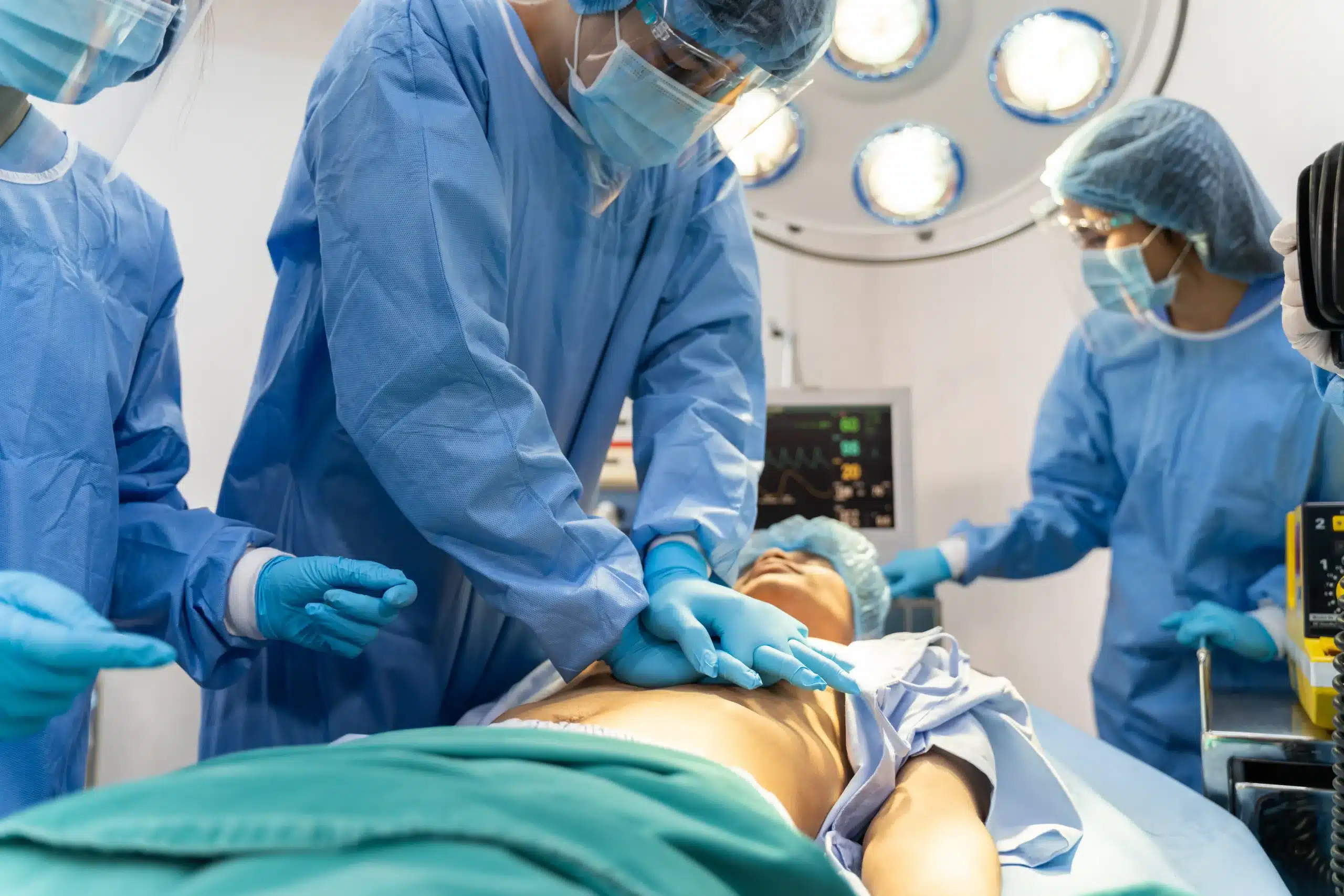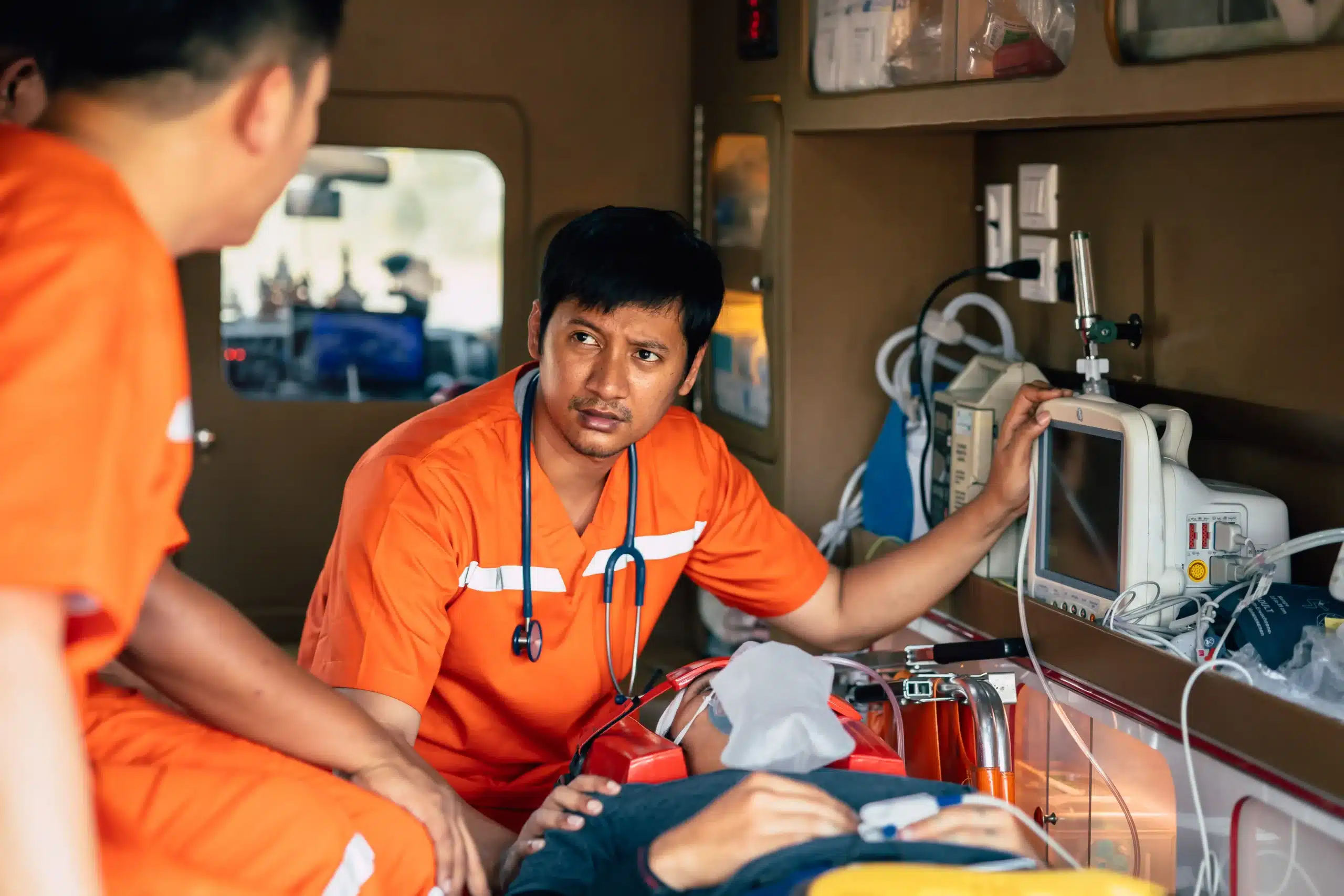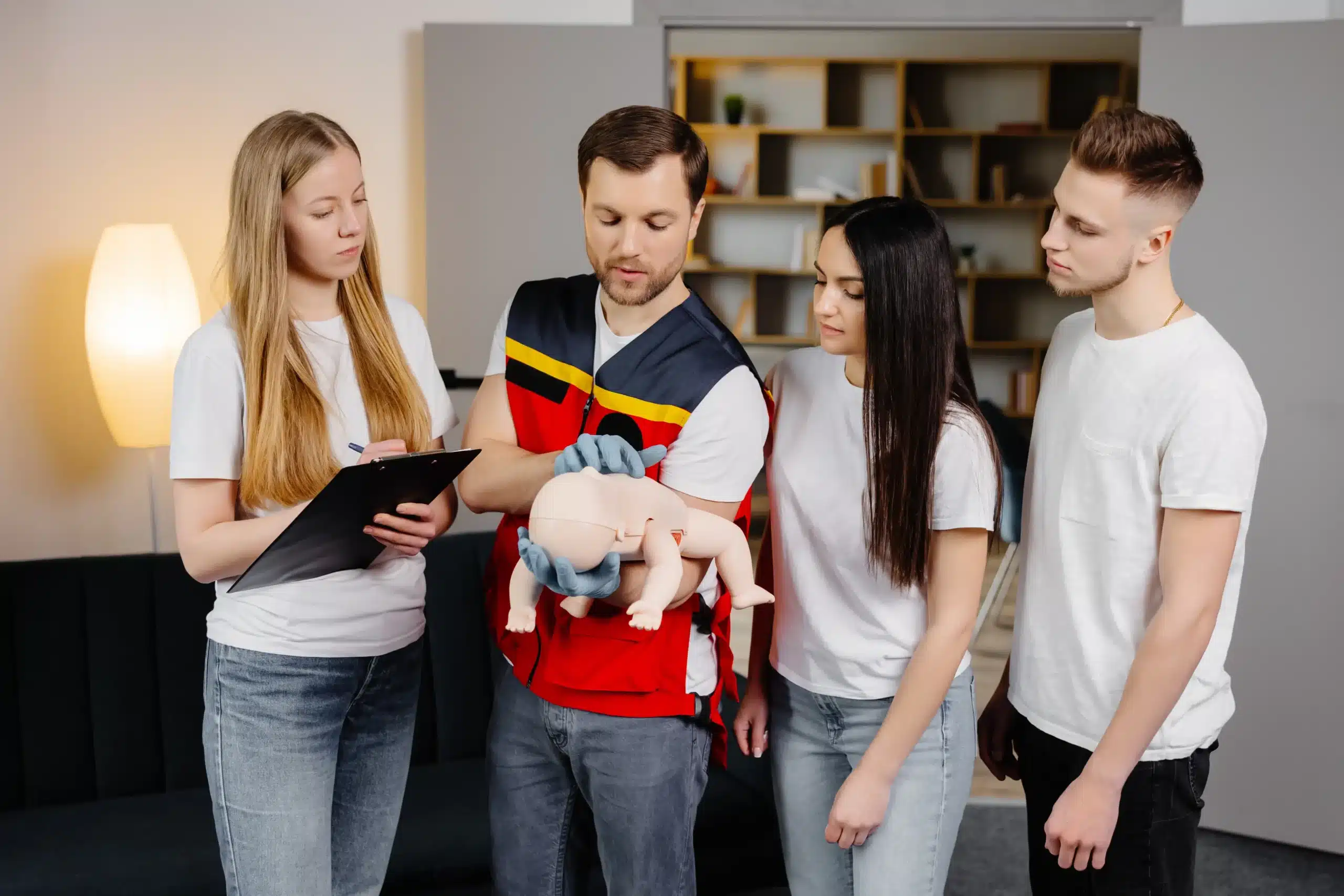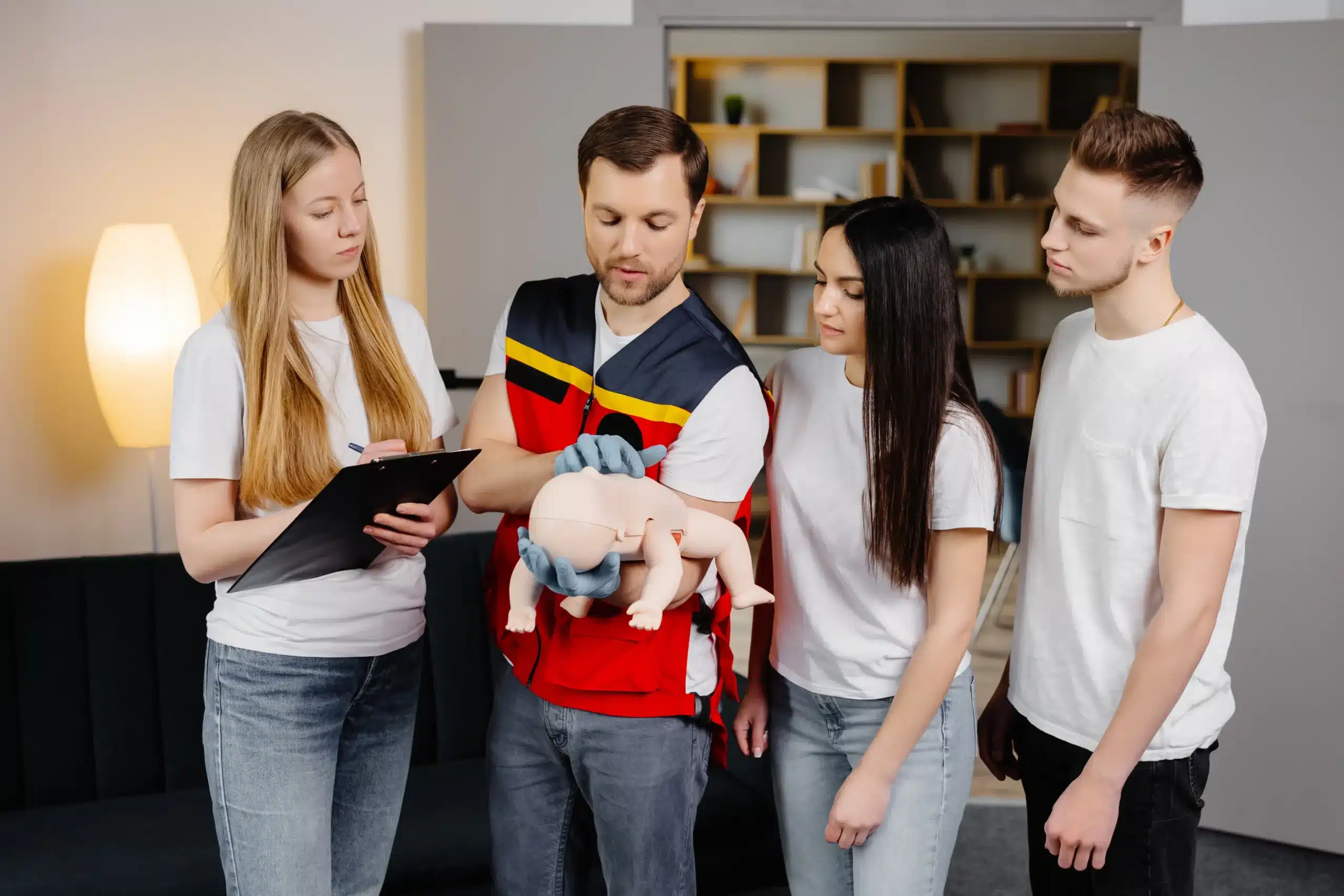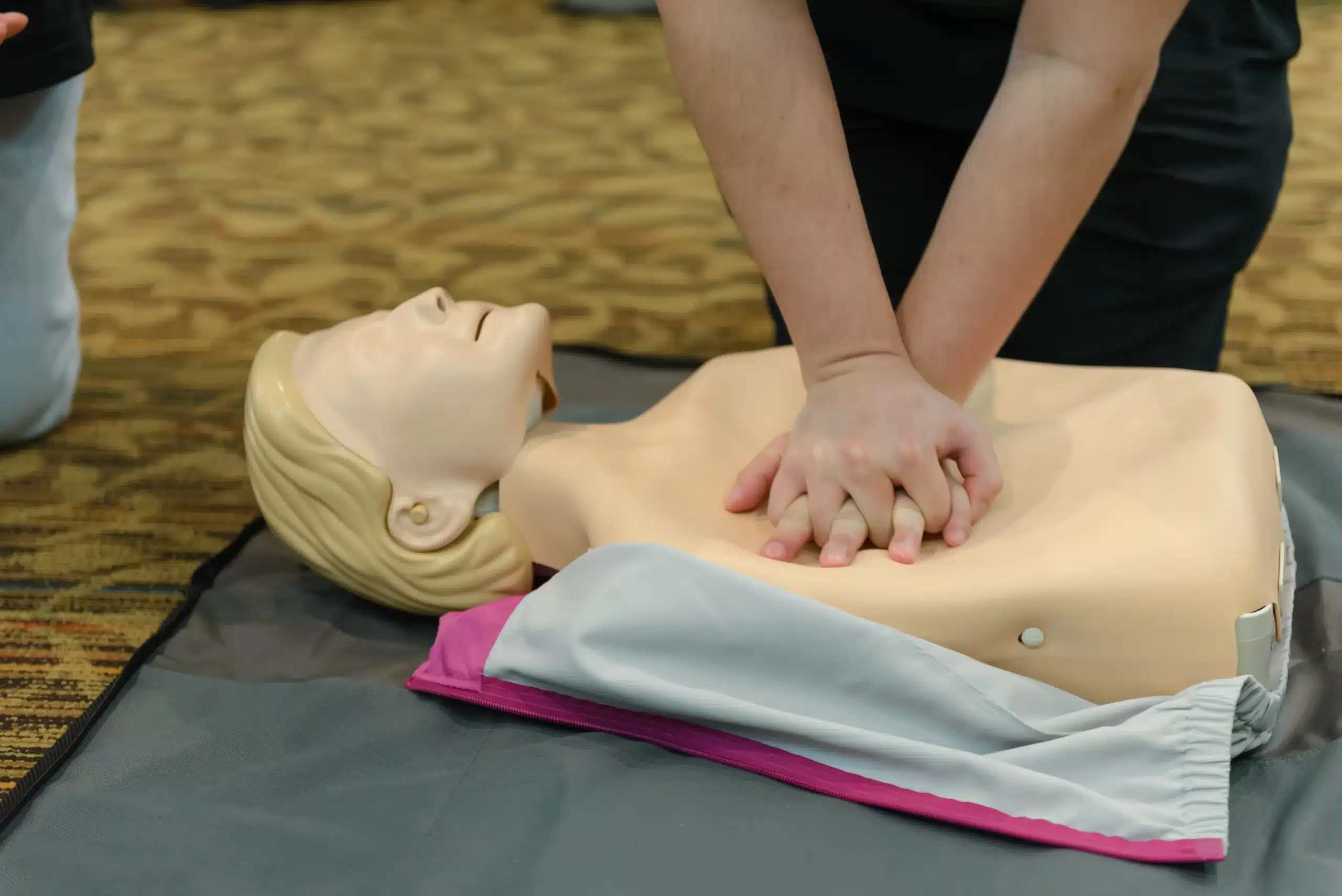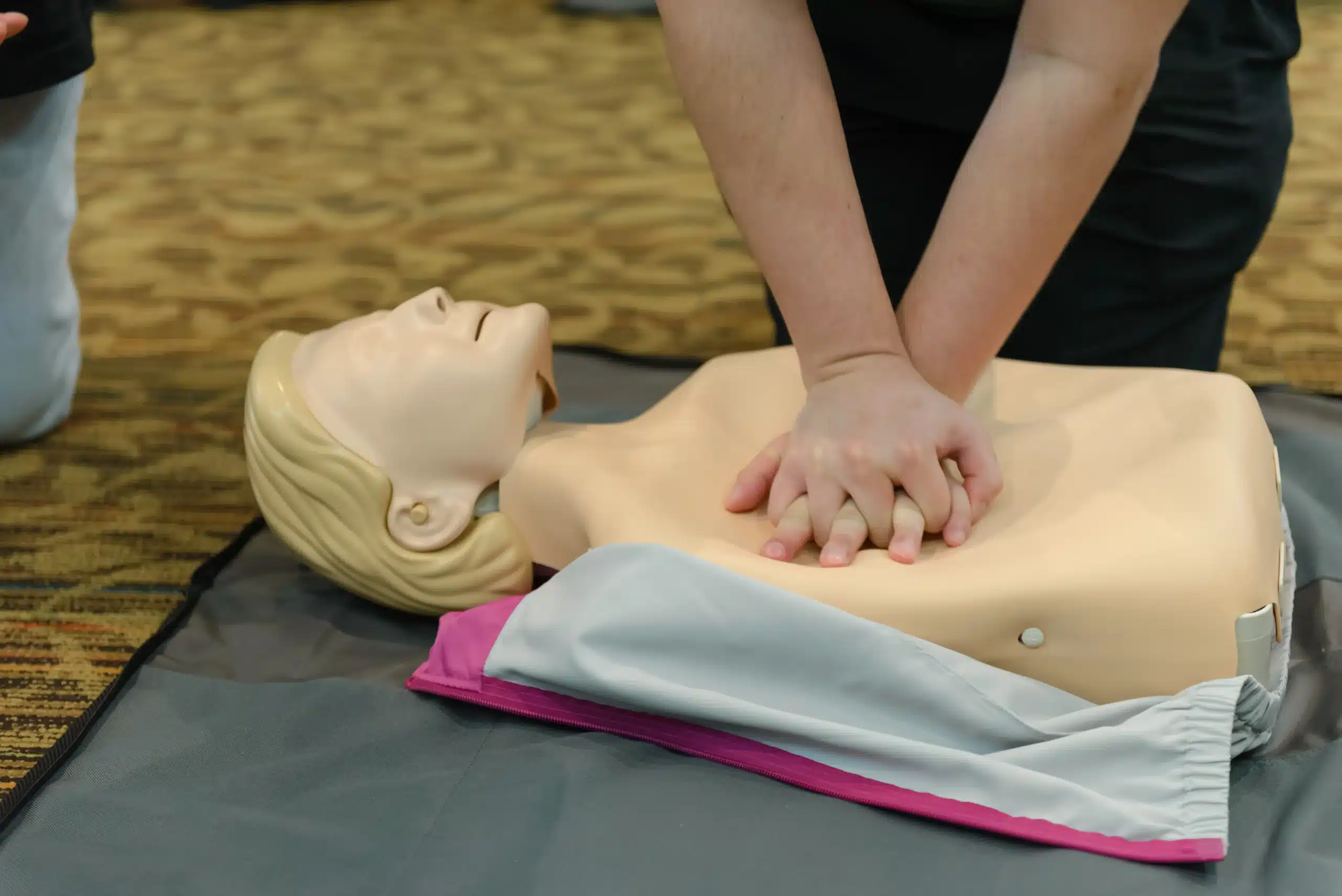Finding the right “BLS certification near me” can be the difference between feeling confident and feeling lost in a medical emergency. This guide is your roadmap to understanding BLS certification, whether you’re a seasoned healthcare professional or just starting your journey in the medical field. We’ll cover the essential skills taught in BLS courses, the various certification options available, and how to choose a reputable training provider. We’ll also address common questions about BLS, such as the difference between BLS and CPR, and offer practical advice for maintaining your certification. Get ready to equip yourself with the knowledge and skills to make a real difference.
Key Takeaways
- BLS certification empowers you to handle medical emergencies. Whether you’re a healthcare professional or not, BLS training provides essential life-saving skills applicable in various settings.
- Finding the right BLS course involves several key considerations. Look for accredited providers with experienced instructors, flexible course formats, and comprehensive resources. Consider factors like location, schedule, and cost when making your decision.
- Maintaining BLS skills requires continued practice and learning. Stay updated on the latest guidelines and refresh your knowledge regularly to ensure you’re always prepared to respond effectively.
What is BLS Certification & Why is it Important?
Knowing what BLS certification entails and why it’s so important can help you decide if it’s the right training for you. Whether you’re a healthcare professional or simply want to be prepared for emergencies, understanding the basics of BLS is key.
What is BLS?
BLS stands for Basic Life Support. It’s the foundation of resuscitation training, especially for healthcare providers like doctors, nurses, and EMTs. Essentially, BLS teaches you the skills to respond to life-threatening emergencies, primarily cardiac arrest and respiratory distress. It focuses on providing immediate care until more advanced medical help arrives.
What You’ll Learn in BLS Training
In a BLS course, you’ll learn how to perform high-quality CPR (cardiopulmonary resuscitation) for adults, children, and infants. You’ll also learn how to use an AED (automated external defibrillator), a portable device that can help restore a normal heart rhythm. The training covers recognizing the signs of someone needing CPR or AED use, providing rescue breaths, and performing chest compressions. Many courses, like those offered by the American Heart Association, also cover choking relief and other basic first-aid techniques. You can find BLS courses in San Francisco through Safety Training Seminars.
Why Healthcare Professionals Need BLS
For many healthcare professionals, BLS certification is an absolute requirement. It ensures they have the essential skills to respond effectively in critical situations. Hospitals, clinics, and other healthcare settings require their staff to be BLS certified to maintain a high standard of patient care. It’s also often a prerequisite for advanced certifications like ACLS (Advanced Cardiovascular Life Support) and PALS (Pediatric Advanced Life Support).
BLS Benefits for Everyone
Even if you’re not in healthcare, BLS training can be incredibly valuable. It empowers you to act quickly and confidently in medical emergencies, potentially saving a life. Knowing BLS can be helpful in various settings, from the workplace to your own home. It gives you the tools to assist family members, friends, or even strangers who experience a sudden cardiac arrest or other emergency. Having these skills can bring peace of mind, knowing you’re prepared to handle unexpected situations. You can explore more about the benefits of BLS training in our practical guide.
Find BLS Certification Classes Near You
So, you’re ready to get BLS certified? Great! Finding the right class is easier than you think. Here’s how to find BLS certification classes near you:
Local Training Centers
Start by searching for “BLS classes near me” online. This will pull up local training centers, community colleges, and hospitals that offer BLS certification courses. BLS training provides essential life-saving skills. From CPR and AED use to airway management, BLS equips you to respond confidently in medical emergencies, whether you’re a healthcare professional or not. Look for established providers with a solid track record. Reading online reviews can give you a sense of other students’ experiences.
Online Search Tools
Several websites specialize in connecting students with BLS certification courses. These sites often let you filter by location, date, time, and course format, making it simple to find a class that fits your schedule. Consider factors like course format (online, in-person, or blended), cost, and the training center’s reputation when selecting a BLS provider.
American Heart Association Resources
The American Heart Association (AHA) offers a wealth of resources on BLS, including course information and a search tool to locate certified training centers. The AHA provides key topics and BLS instructor essentials that improve BLS skills and outcomes from cardiac arrest. Their website is a great starting point for learning more about BLS and finding a reputable training center in your area.
Safety Training Seminars in San Francisco
Safety Training Seminars offers a comprehensive range of American Heart Association (AHA) courses, including BLS certification, at our San Francisco location. We also serve surrounding areas, including Daly City, San Mateo, and Oakland. We pride ourselves on excellent customer service and a low price guarantee. Check out our BLS course page to learn more and register for a class. We offer classes daily across over 60 offices in Northern California.
BLS Certification: Course Formats & What to Expect
Choosing the right BLS course format depends on your learning style and schedule. Let’s explore the most common options: in-person, online, and blended learning. We’ll also cover what you can expect in terms of course length and the importance of hands-on training.
In-Person Classes
Traditional in-person BLS classes provide a structured learning environment with direct interaction with a certified instructor. This format allows for immediate feedback and gives you a chance to ask questions and learn from your classmates. If you enjoy a classroom setting and value face-to-face instruction, in-person training might be a good fit. The American Red Cross offers in-person BLS courses. Check with your local chapter for schedules and availability.
Online Options
Online BLS courses offer flexibility and convenience, allowing you to learn at your own pace and from anywhere with an internet connection. These courses typically include interactive modules, videos, and online assessments. While the online portion covers the theoretical aspects of BLS, remember that you’ll still need an in-person skills session to receive your full certification. The American Red Cross also offers online BLS courses as part of their blended learning program.
Blended Learning
Blended learning combines online learning with in-person skills sessions. You’ll work through the online materials at your own speed, covering the knowledge-based components of BLS. Then, you’ll attend a shorter, in-person session to practice your skills and demonstrate competency to your instructor. This format offers a practical balance of flexibility and hands-on learning. The Red Cross uses this blended learning approach for their BLS program, allowing students to learn the material online and then practice their skills in person.
Course Length & Key Topics
BLS courses generally take around 3.5 hours to complete. They cover essential topics such as adult, child, and infant CPR, how to use an AED, and often include basic first aid training. The curriculum combines classroom learning and hands-on practice to ensure you understand both the theory and practical application of these life-saving skills. CPR Seattle offers a helpful overview of what to expect in a BLS course.
Hands-On Practice
Hands-on practice is a critical element of any BLS course. You’ll practice CPR techniques on mannequins, often with feedback devices, to refine your technique and build your confidence. This practical experience is essential for mastering the skills and being prepared to respond effectively in a real-life emergency. Hands-on training with feedback devices is invaluable for developing muscle memory and ensuring proper technique.
How Much Does BLS Certification Cost?
Knowing the cost of BLS Certification is a practical first step. This section breaks down the average costs, what’s typically included, and potential ways to save.
Average Price Range
BLS certification courses typically range from around $60 to $80, with CPR-only classes often slightly less expensive. For example, a CPR-only class might be $59.95 (discounted from $79.95), while a combined CPR and First Aid class could be $79.95 (discounted from $99.95). Keep in mind that prices can vary depending on the training provider, location, and any ongoing promotions. Safety Training Seminars offers a low price guarantee, so you can feel confident you’re getting a competitive rate. Check our website for current pricing on BLS, ACLS, and PALS courses.
What’s Included
A BLS certification course covers core life-saving skills. You’ll learn adult, child, and infant CPR, how to use an automated external defibrillator (AED), and often, basic First Aid. Many courses, like those offered by the American Red Cross, align with OSHA requirements, giving you confidence in the quality and relevance of the training. Some providers also include study materials, either physical or digital, in the course fee. Be sure to ask about what’s included when comparing providers.
Discounts & Deals
It’s always a good idea to check for discounts! Many organizations, including the American Red Cross, periodically offer deals on training courses and materials. These might include percentage discounts, promo codes, or even free shipping on study guides. For example, you might find discounts on training supplies or emergency preparedness kits. Check with your chosen provider about any current promotions to save on your BLS certification. You can also explore options like group discounts if you’re signing up with colleagues or friends.
Choose the Right BLS Certification Provider
Finding the right BLS certification provider is just as important as the certification itself. It impacts the quality of your training and how well you’ll feel prepared to respond to emergencies. Here’s what to consider:
Accreditation & Reputation
First, confirm your provider is accredited by a nationally recognized organization like the American Heart Association. This ensures your certification meets established standards and will be accepted by employers and healthcare organizations. Look for providers with a solid reputation and positive student reviews. A quick search for “BLS certification near me” can help you find local options and check out their online presence. For those in the San Francisco Bay Area, Safety Training Seminars offers AHA-certified courses.
Instructor Qualifications
Experienced, certified instructors are key to effective BLS training. Instructors should have a strong healthcare background and a passion for teaching. Look for providers who highlight their instructors’ credentials and experience. The quality of instruction directly affects how well you retain the information and perform under pressure.
Course Flexibility & Convenience
Your schedule is busy, so choose a provider that offers flexible course options. This might include weekend or evening classes, online modules, or blended learning formats that combine online and in-person instruction. Also, consider the location. Is the training center easily accessible? Do they offer on-site training for groups? Safety Training Seminars offers convenient daily classes across over 60 offices in Northern California.
Resources & Support
Finally, think about the resources and support offered beyond the course itself. Does the provider offer refresher courses or continuing education? Do they provide access to study materials or online resources? A good provider will support you throughout your certification journey. Safety Training Seminars offers RQI programs for ongoing training and skill maintenance. They also have a low price guarantee, ensuring you receive excellent value.
Top BLS Certification Providers
Finding the right BLS certification provider is key to receiving high-quality training. Here are some reputable organizations and companies that offer BLS certification courses:
American Heart Association (AHA)
The American Heart Association sets the standards for CPR and emergency cardiovascular care. Their BLS courses are widely recognized and respected in the healthcare community, emphasizing hands-on practice and real-life scenarios to build confidence for responding effectively in emergencies. They offer various course formats, including in-person and blended learning.
American Red Cross
The American Red Cross is another trusted provider of BLS certification. Their courses cover essential life-saving skills, including CPR, AED use, and choking relief for adults, children, and infants. The Red Cross offers flexible training options for different learning styles and schedules.
National CPR Foundation
The National CPR Foundation provides BLS certification courses aligned with the latest resuscitation guidelines. They offer various courses for healthcare professionals, focusing on practical skills and knowledge application.
ProCPR
ProCPR offers online BLS certification courses that prioritize flexibility and convenience. Their online format lets you learn at your own pace and complete coursework from anywhere with internet access—a great option for busy professionals.
American Health Care Academy
The American Health Care Academy offers BLS certification courses that meet current industry standards. They provide comprehensive training to prepare healthcare providers for various emergency situations.
Safety Training Seminars
Safety Training Seminars offers a variety of American Heart Association (AHA) courses, including BLS certification, throughout Northern California. With a focus on excellent customer service and a low price guarantee, they provide convenient and affordable training. You can find their BLS courses along with information on other AHA courses like ACLS and PALS. They also offer the RQI program and more. For those concerned about cost, details on their low price guarantee are readily available.
BLS vs. Other Life Support Courses
Knowing the difference between various life support certifications can be tricky. This section clarifies the distinctions between BLS, CPR, ACLS, and PALS.
BLS vs. CPR Training
CPR (Cardiopulmonary Resuscitation) teaches basic life-saving skills like chest compressions and rescue breaths. It’s for anyone who wants to learn how to help someone whose heart has stopped beating, bridging the gap until professional help arrives. CPR covers essential techniques for adults, children, and infants.
BLS (Basic Life Support) certification builds upon CPR. It’s a more advanced course designed for healthcare professionals (doctors, nurses, EMTs, etc.) and first responders (police, firefighters). BLS includes everything in CPR plus extra techniques for dealing with breathing problems and other medical emergencies, often incorporating the use of equipment like bag-valve masks and automated external defibrillators (AEDs). The key difference between BLS and CPR lies in the audience and the depth of the training. Healthcare providers often choose a BLS course to meet workplace requirements and enhance their skillset.
BLS, ACLS & PALS
While BLS provides a foundational understanding of life support, ACLS (Advanced Cardiac Life Support) and PALS (Pediatric Advanced Life Support) take training further. These certifications are geared toward healthcare providers who manage more complex emergencies. ACLS focuses on adult cardiac arrest and other cardiovascular emergencies, emphasizing teamwork, effective communication, and advanced interventions. PALS equips providers to respond to emergencies in infants and children, addressing their unique physiological needs. BLS often serves as a prerequisite for both ACLS and PALS certification. Consider taking an ACLS course or a PALS course to build upon your BLS knowledge.
Maintain Your BLS Certification
Once you’ve earned your BLS certification, staying current is key. Knowing the renewal process and committing to continuing education will ensure you’re always prepared to provide high-quality care.
Renewal Requirements
BLS certification is typically valid for two years. To maintain your credentials, you’ll need to complete a renewal course before your certification expires. This refresher ensures you’re up-to-date on the latest guidelines and best practices in life-saving techniques. Check with your certifying organization, such as the American Heart Association or the American Red Cross, for specific renewal requirements.
Continuing Education
Beyond renewing your certification, ongoing learning is crucial for any healthcare provider. Continuing education in BLS focuses on reinforcing core skills and introducing new developments in resuscitation science. Look for opportunities to expand your knowledge and refine your techniques through workshops, online resources, and advanced training programs. These programs often cover key topics that serve as BLS instructor essentials, which are designed to improve BLS skills and outcomes from cardiac arrest situations. Staying informed and actively engaged in continuing education demonstrates your commitment to providing the best possible care. For example, consider exploring the RQI programs offered by Safety Training Seminars to supplement your BLS knowledge.
Common BLS Certification Misconceptions
It’s easy to get confused about BLS certification, especially with so much information online. Let’s clear up a few common misconceptions.
Who Needs BLS?
One common misconception is that only doctors and nurses need BLS certification. While it’s essential for healthcare professionals, BLS training is also incredibly valuable for anyone in a position to respond to medical emergencies. Think lifeguards, coaches, teachers, and even parents. BLS equips you to provide critical care until professional help arrives. The American Red Cross explains the differences between BLS and CPR certification and how BLS builds upon basic CPR skills with more advanced techniques.
Online vs. In-Person Training: Which is Better?
While online BLS courses offer flexibility, they often miss a crucial component: hands-on practice. The Red Cross notes that online-only courses might not meet all workplace requirements because they lack this practical training. CPR Seattle emphasizes the importance of in-person training for getting enough practice time and suggests that shorter courses or online-only options may not provide sufficient hands-on experience. Think of it like learning to drive—you wouldn’t want to hit the road without real-world practice, right? The same applies to BLS. You need hands-on training to build confidence and proficiency.
Skill Retention & Practice
Another misconception is that once you’re certified, you’re good to go forever. Unfortunately, skills fade over time. Regular practice and refresher courses are key to maintaining your BLS skills. Surefire CPR notes that effective training programs involve communication and feedback between instructors and participants, which helps improve skill development and retention. Just like any other skill, consistent practice is essential for providing effective care in real-life emergencies. CPR Seattle reinforces this, stating that poor training leads to ineffective CPR. Ongoing practice is crucial for maintaining your skills and providing confident, high-quality care.
Prepare for Your BLS Certification Course
Getting ready for your BLS certification course can make a real difference in how well you perform. A little prep work goes a long way, so let’s cover the essentials to help you feel confident and prepared.
Study Materials & Resources
The American Heart Association (AHA) provides key BLS topics that instructors use to improve skills and outcomes from cardiac arrest. Reviewing these can give you a head start before your class. Many training organizations, like American Health Training, offer study materials on their websites. Checking out a BLS certification page can be a great way to familiarize yourself with the core concepts.
What to Expect on the Exam
The BLS certification exam has two parts: a written test and a practical skills demonstration. The written exam is open-book and consists of 25 questions, and you’ll need to score at least 84% to pass. The practical portion involves demonstrating your skills in Adult and Infant CPR. The entire course, including classroom learning and hands-on practice, usually takes about 3.5 hours. Knowing what to expect can ease any test-day jitters.
Tips for Success
Active communication with your instructor is key to getting the most out of your training. Don’t hesitate to ask questions and seek feedback to fine-tune your skills. When choosing a BLS course, look for one that offers plenty of hands-on training time with high-quality manikins. This practical experience will build your confidence and prepare you for real-world scenarios. Safety Training Seminars offers courses with ample hands-on training.
Related Articles
- BLS Certification in San Francisco: Your Complete Guide – San Francisco CPR Classes
- BLS Training Near Me: A Practical Guide – San Francisco CPR Classes
- BLS for Healthcare Providers in San Francisco – San Francisco CPR Classes
- BLS Renewal Near Me: Your Complete Guide – San Francisco CPR Classes
- Find the Best BLS Classes in San Francisco – San Francisco CPR Classes
Frequently Asked Questions
Is BLS certification the same as CPR certification? CPR training teaches the basics of chest compressions and rescue breaths, while BLS certification builds upon those skills and includes additional techniques for managing breathing problems and using equipment like AEDs. BLS is generally required for healthcare providers and first responders, while CPR training is valuable for anyone.
How long does BLS certification last, and how do I renew it? BLS certification is typically valid for two years. You’ll need to take a renewal course before it expires to stay current on the latest guidelines and maintain your credentials. Check with your certifying organization (like the AHA or Red Cross) for their specific renewal process.
What if I’m not in healthcare? Is BLS training still relevant for me? Absolutely! While BLS is essential for healthcare professionals, it’s a valuable skill for anyone who might be in a position to help during a medical emergency. Teachers, coaches, lifeguards, parents, and other community members can all benefit from BLS training.
Are online BLS courses as good as in-person classes? Online BLS courses offer flexibility, but they often lack the crucial hands-on practice component. Many employers and certifying organizations require in-person skills training for full certification. Blended learning, which combines online coursework with in-person skills sessions, can be a good compromise.
How can I find BLS classes near me? You can easily find BLS classes near you by searching online for “BLS classes near me.” This will show you local training centers, community colleges, and hospitals that offer BLS certification. You can also use online search tools or check the American Heart Association’s website for certified training centers in your area. Safety Training Seminars offers BLS courses in San Francisco and surrounding areas.


